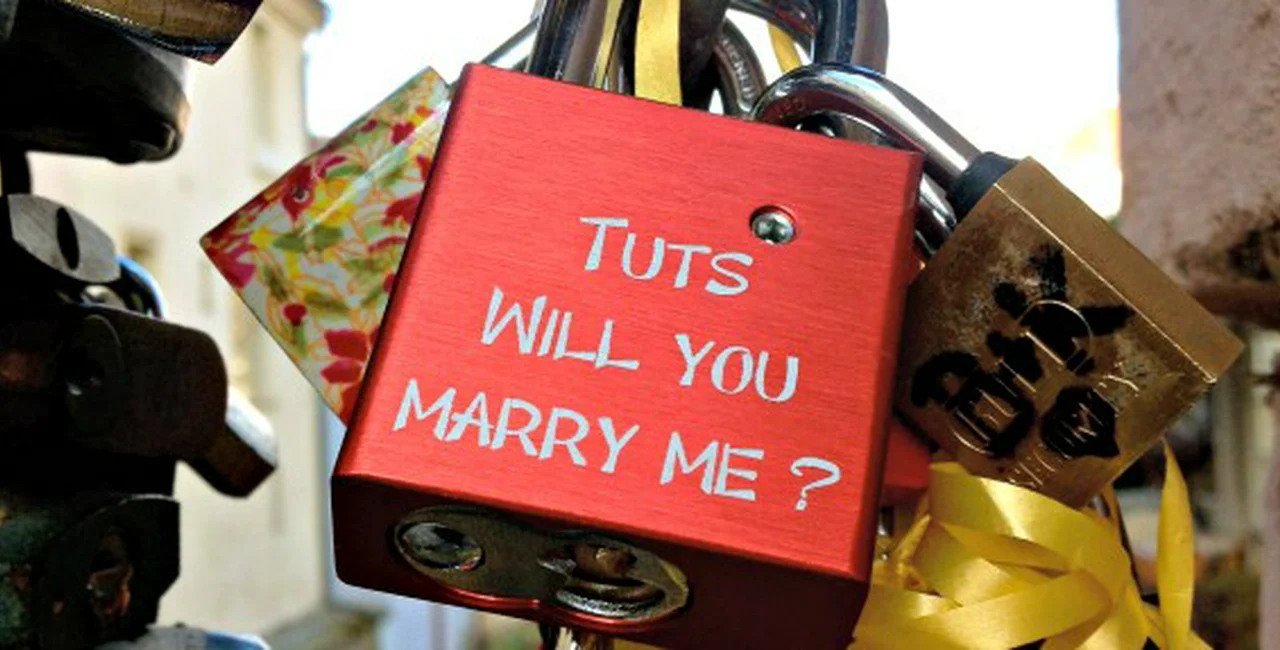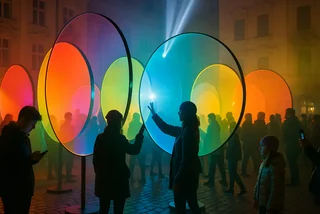“Aw, look! It’s just like Paris!”
Spend more than thirty seconds near the Čertovka pedestrian bridge next to the John Lennon Wall and you’ll hear this phrase repeatedly from passing groups of tourists. No, they’re not looking up at the mini-Eiffel Tower on top of Petřín Hill. They’re talking about the love locks trend that has made its way from Paris to Prague.
The padlocks are intended to be a romantic gesture. Couples attach the lock, kiss the key and toss it into the river below. Many also write or engrave their name and date on the locks. Love locks are popping up on bridges in major cities all over the world and, in the Czech Republic, Prague, České Budějovice, and Děčín.
The locks’ booming popularity in Europe was likely influenced by 2006 best-selling Italian novel Ho voglia di te (I Want You), which depicts a couple locking their love to Rome’s Ponte Milvio bridge. It was made into a movie in 2007.
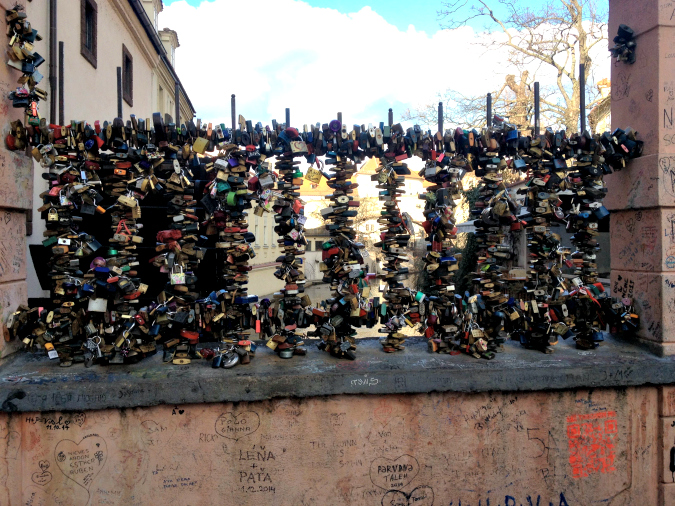
There’s no doubting these couples mean well. Michele Mecum and her Czech-American boyfriend Ivan left one of these romantic mementos when they visited Prague in 2014. “It means more to me to know we left something in Prague to symbolize our love then any souvenir we could take home,” she said. “I would be so sad if they cut them off!”
But the rate at which these locks are multiplying has this act of “love” turning into vandalism. In Rome anyone caught attaching a lock to a bridge is charged 50 EUR. Paris, where the trend has exploded in recent years, started removing sections of the Pont des Arts for repair when pieces of the bridge started collapsing under the additional weight.
“Weight is the most dangerous issue,” said Ing. Jiří Sládek, Deputy of Special Structures at TSK, a private company responsible for managing Prague’s bridges, tunnels, and roadways. “We remove them from time to time to save the bridges.”
Padlocks have even started showing up on one of Prague’s most treasured attractions: Charles Bridge. The memorial marking the spot where St. John of Nepomuk was martyred is a particularly favored place to attach a lock. While TSK is not responsible for this structure, another organization has stepped in to help.
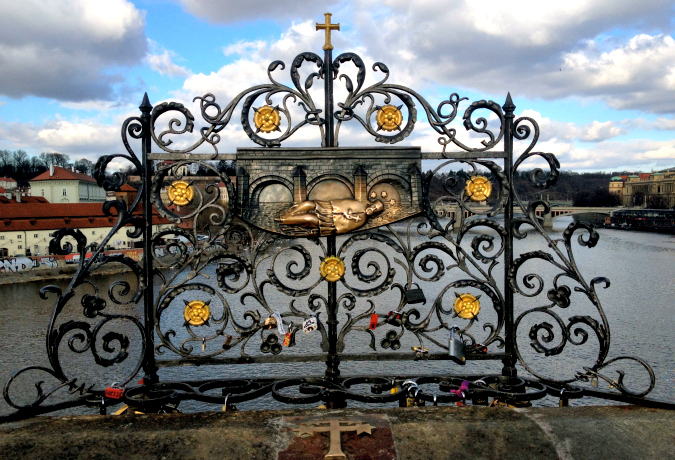
The Charles Bridge Artists Association (CBAA) is working to keep this trend from damaging a UNESCO World Heritage site.
CBAA’s Roman Kotrč told us they started removing the locks from various locations, including the Charles Bridge in 2006. In one year, they filled five boxes of locks; each weighed in at around 50kg. As previously reported by iDNES leftover locks were distributed to an art school while some were kept by a Prague museum.
Kotrč says that at this point, the association is selling them for scrap metal to cover the costs of gloves, tools and other materials required for their removal.
In Paris, expats are among those leading the charge for more responsible expressions of love. Lisa Anselmo and Lisa Taylor Huff started a social media campaign in early 2014 called No Love Locks to encourage government involvement and responsible tourism, and to educate the public about the many dangers of this trend. That list includes rust, river pollution, and creating an environment where other forms of vandalism, such as graffiti, become more acceptable.
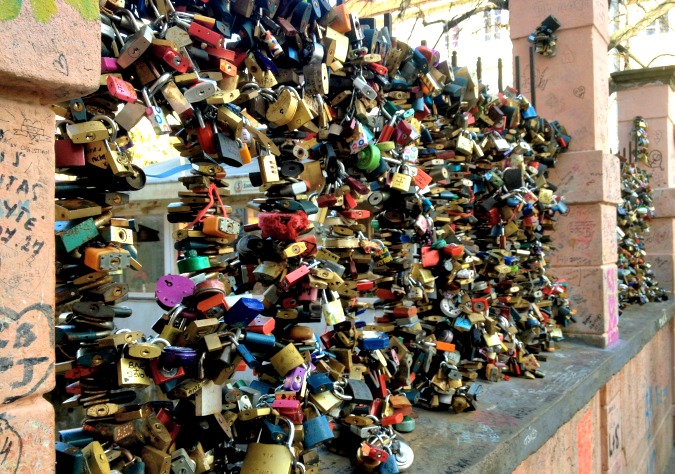
Locals here in Prague are also not pleased by the increasingly popular blight on the city. Says Mgr. Kateřina Bártová from Prague’s tourism board, “We get questions from locals who aren’t happy to see so many locks on the bridges, gates and other landmarks around Prague.”
Martin Tauchman, a university student here, is one such local. “One day, this trend will destroy one of those bridges,” he said.
Prague photographer Jan Macuch imagines another removal strategy: “Give out a few free angle grinders to the homeless so they could get them off easily and sell them as scrap metal.”
So what can love struck travelers do to document their undying devotion? Some cities are creating less harmful alternatives. Rotterdam, Moscow and Seoul have built tree- and heart-shaped structures designated to hold these symbols of affection.
#LoveWithoutLocks is a social media campaign in Paris that was created for couples to share photos publicly instead of leaving physical evidence of their visits.
If we want Prague to remain a romantic city for generations to come, we need to come up with a way to maintain the intent of the locks without destroying the structures that we all love. Let’s just hope that Prague doesn’t start experiencing one New York City mutation of this trend. In addition to locks, tourists have started attaching bras, condoms, and tampons on the Brooklyn Bridge!
Stay classy, tourists.
**
What do you think about love locks? Tourist trash or loving gesture?












 Reading time: 4 minutes
Reading time: 4 minutes 